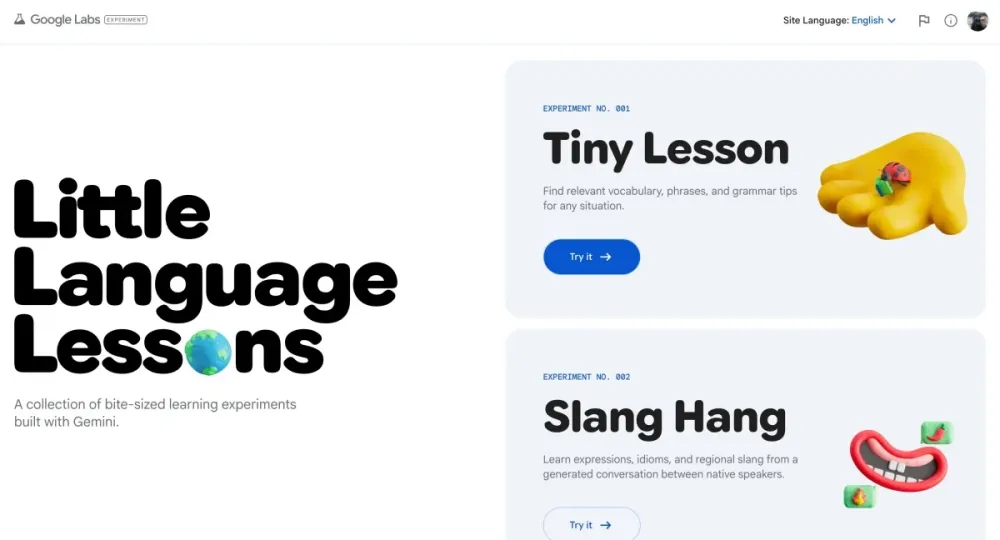
Google recently introduced an experimental feature through Google Labs called Little Language Lessons, a suite of language-learning tools powered by Gemini artificial intelligence. This innovative feature even integrates Google Lens technology, enabling users to quickly identify and learn the foreign-language names of everyday objects simply by scanning them with their phone’s camera.
Similar to applications such as Speak AI, which use generative AI to simulate diverse conversational scenarios and personas, Little Language Lessons allows users to practice foreign languages in a way that closely mirrors authentic human interaction. These tools also provide feedback to help users refine their phrasing based on real-time conversational analysis.
Google’s experimental offering leverages Gemini to recreate practical situations — such as ordering coffee at a café or reporting a lost passport at an airport — allowing learners to engage with relevant vocabulary, phrases, and even regional slang in context. The goal is to foster a deeper, more natural command of localized expressions.
At present, the Little Language Lessons interface is available in English, Spanish, and Portuguese. However, the languages supported for learning include Arabic, Simplified Chinese, Traditional Chinese (Hong Kong and Taiwan), Australian English, British English, American English, French (France and Canada), German, Greek, Hebrew, Italian, Haitian Creole, Japanese, Korean, Portuguese (European and Brazilian), Russian, Spanish (Spain and Latin America), and Turkish.
The platform offers a range of lesson formats — from vocabulary and grammar modules to interactive “Tiny Lessons” focused on situational learning, and “Slang Hang” sessions dedicated to colloquialisms and idiomatic usage. Additionally, users can employ Google Lens to capture objects in their surroundings and receive translations or linguistic context in their target language.
As this feature remains in the experimental phase, Google acknowledges the potential for inaccuracies, errors, or unintended content. Nevertheless, the underlying objective is to harness the capabilities of AI to make language learning more accessible, intuitive, and engaging for people around the world.

